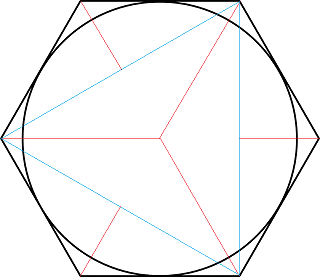There is a circular area with radius 1 km. And there is a tunnel, which is just under the surface, but invisible - unless you dig. It is known that the tunnel goes under the area (at least touches it at one point), it is straight and infinitely long (in both directions).
You have a plow and can dig along some lines with it. When you plow and cross the tunnel you will find it. How much (how long) and where do you have to plow to guarantee that you will find the tunnel?
You are allowed to plow outside of the area as well as inside. You can take the plow out of the ground and move it over the ground without plowing.
For example, you could choose to plow just along the perimeter, and then your result would be $2\pi\approx6.28\ \text{km}$. The task is to make this number as small as possible.
I don't know any good approach, but two people told me that at least $4.83\ \text{km}$ is possible to achieve, and one told that less than $4.8\ \text{km}$ is also possible.












